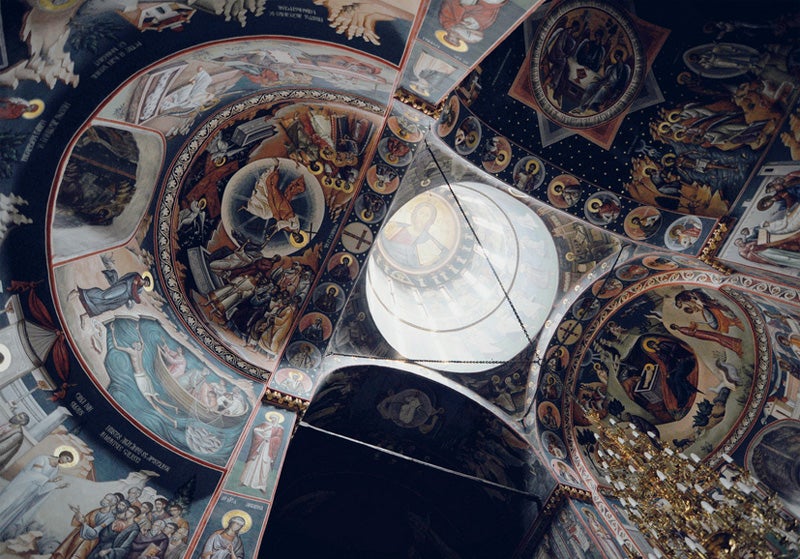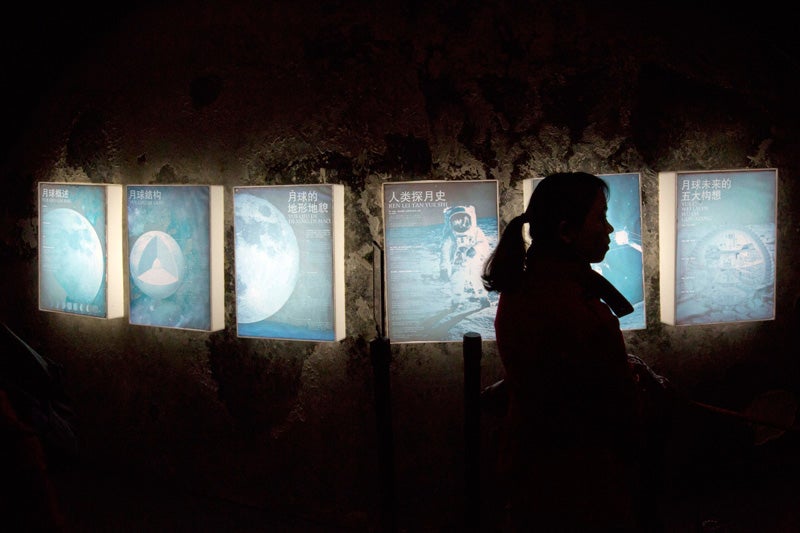Happy New Year!
ListenJulian Calendar year 2767 begins tomorrow. 13 days out of step with Gregorian Calendar which started in 1582. China’s lunar rover is at work and China announces open collaboration policy on space exploration even with the United States and other western countries. Thursday’s full moon is the smallest of the year — Won’t be able to tell though. Jupiter and the moon close tomorrow night. Mars, Jupiter, Saturn, Venus in the pre-dawn sky this week.
January 13, 2014
[Dave Heller] Aficionados of the Julian calendar are engaged in final preparations for their variation on the Mummer Strut. Putting us through our paces is Derrick Pitts, chief astronomer at the Franklin Institute. Wow, I get to wish you a happy New Year once again!
[Derrick Pitts] Thank you very much and same to you, although it’s a Julian New Year instead of the regular Gregorian year.
“Julian” — What does that mean?
Well Julian, the Julian calendar is the calendar that had been used since the founding of Rome. And that calendar, well … works fine except that it doesn’t really match very well to the astronomical definition calendar, which would relate to the Earth’s orbit around the sun. So if we’re going by that standard — which really is the right one to go by — then what happens is we end up with this funny situation of 365 and a quarter days. Well what do you do with that quarter day? If you build them up over four years you come up with Leap Year, and then you add an extra day at the end of the month in February, for February 29. Now if we didn’t pay close attention to that, what would happen is the calendars would be begin to get out of step. And that getting out of step would eventually end up with the calendrical year and the seasonal year being way out of step. And then that doesn’t really make a lot of sense. So what happened was during the period of Pope Gregory in 1582, he decreed that a new calendar would be put into use which would accomodate all these funny little astronomical inconsistencies, as you might say of them, or the civil inconsistencies in the astronomical calendar, so we now have a calendar that fits really well. Now, not everybody has given up on the Julian calendar. In fact, beginning tomorrow — January 1 on the Julian calendar — is 13 days out of step with the Gregorian calendar. And some churches do use the Julian calendar, and folks that use it are often called “old calendrists” because they use the old Julian calendar.
Fast forward to modern times: Even that leap year day isn’t enough, we now sprinkle it with the occasional leap second.
Yes we do. At the beginning of certain years, we’ll add the extra second because we need to keep up with the time. And we need to do that because, of course, the motions are slowing down and we need to accomodate for that. Otherwise, our watches will be off and it all goes downhill from there, and who knows where we end up.
-

Photo by Flickr user fusion-of-horizons
One thing we know for certain: 2014 looks like it’s going to be a very busy year for manned missions aloft.
Yes, it will be a very busy year. Already there have been two U.S. commercial launches; one of them the SpaceX launch system carrying a heavy-weight satellite into orbit, and the second launch was a successful orbital sciences launch carrying supplies up to International Space Station just last week. So already there have been two of those U.S. commercial launches. Spaceship 2, the spacecraft designed by Scaled Composites as part of the Virgin Galactic space system had its third successful test flight last week, and it looks like they’re almost well inline, all the parts in place, to begin ferrying tourists up to space for their first trips into space as non-astronauts.
On the moon, China’s rover is working out just fine. It took a break while it was in the lunar night period, so that was about two weeks off. But now that it’s back to lunar day, the rover has gotten to work, rolling around the surface, collecting data, taking images, sending them back to Earth. And the system is working quite well. And the most interesting aspect about this is that now that the rover has landed on the moon, the Chinese administrator for space exploration now says that China is open to cooperative ventures with other countries around the world, including the United States and other developing countries. It is looking to develop partnerships to continue space exploration.
-

A woman is silhouetted by posters describing an exhibit on the moon at the China Science and Technology Museum in Beijing Sunday, Dec. 15, 2013. China’s first moon rover touched the lunar surface and left deep traces on its loose soil, state media reported Sunday, several hours after the country successfully carried out the world’s first soft landing of a space probe on the moon in nearly four decades. (AP Photo/Ng Han Guan)
Say, will it take a collaborative lunar venture to determine whether the diameter of the moon is shrinking and growing alternately over time?
No, we can do that very simply with mathematics. In fact, I’m sure some Greek mathematicians did this thousands of years ago without too much difficulty. In fact as it turns out, if they were around today, they would be able to identify that this Thursday’s full moon will be the smallest full moon of the year.
The smallest full moon?
Yeah, it doesn’t quite make sense — the smallest “full” moon. But if you think about the geometry of a full moon, this month’s full moon has the moon at its largest apogee, its greatest distance from the Earth for the year. So the amount of sky that it takes up, the angular diameter of the moon in the sky, is the smallest of the year for full moons. Now those apogee distances vary during the course of the year. So there will be one that’s closer to the Earth, making that full moon a larger full moon, but this particular one for this month is the smallest one of the year.
Could — with the naked eye — we discern a difference in diameter between the smallest and then subsequently the largest full moon of the year?
That’s a really interesting question because right away you might say, “Oh, sure. Yeah, you could see that.” But the fact of the matter is it’s really difficult to measure the diameter of the moon with the naked eye. Because often the full moon appears in the sky with nothing else around it to provide you any scale against which you can measure, number one. And then number two: The size difference really isn’t easily discernible. So between the fact that it’s hard to see the size difference just because it’s not that great, and number two there’s no scale against which to measure, it’s very, very difficult.
We do have some context though as this smallest full moon cozies up to the biggest planet.
Coming up tomorrow night, Jupiter and the moon will appear very close in the evening sky. So, right after sunset you’ll be able to see the moon rise by 6:30 in the evening, certainly by 7 p.m. in the evening. It’ll be up high enough that you’ll also be able to see the largest planet in the solar system — Jupiter — just to the left or north of the moon. So they’ll be together in the sky all night long. Should be a great sight, the largest planet in the solar system and our largest neighbor celestial object.
WHYY is your source for fact-based, in-depth journalism and information. As a nonprofit organization, we rely on financial support from readers like you. Please give today.




